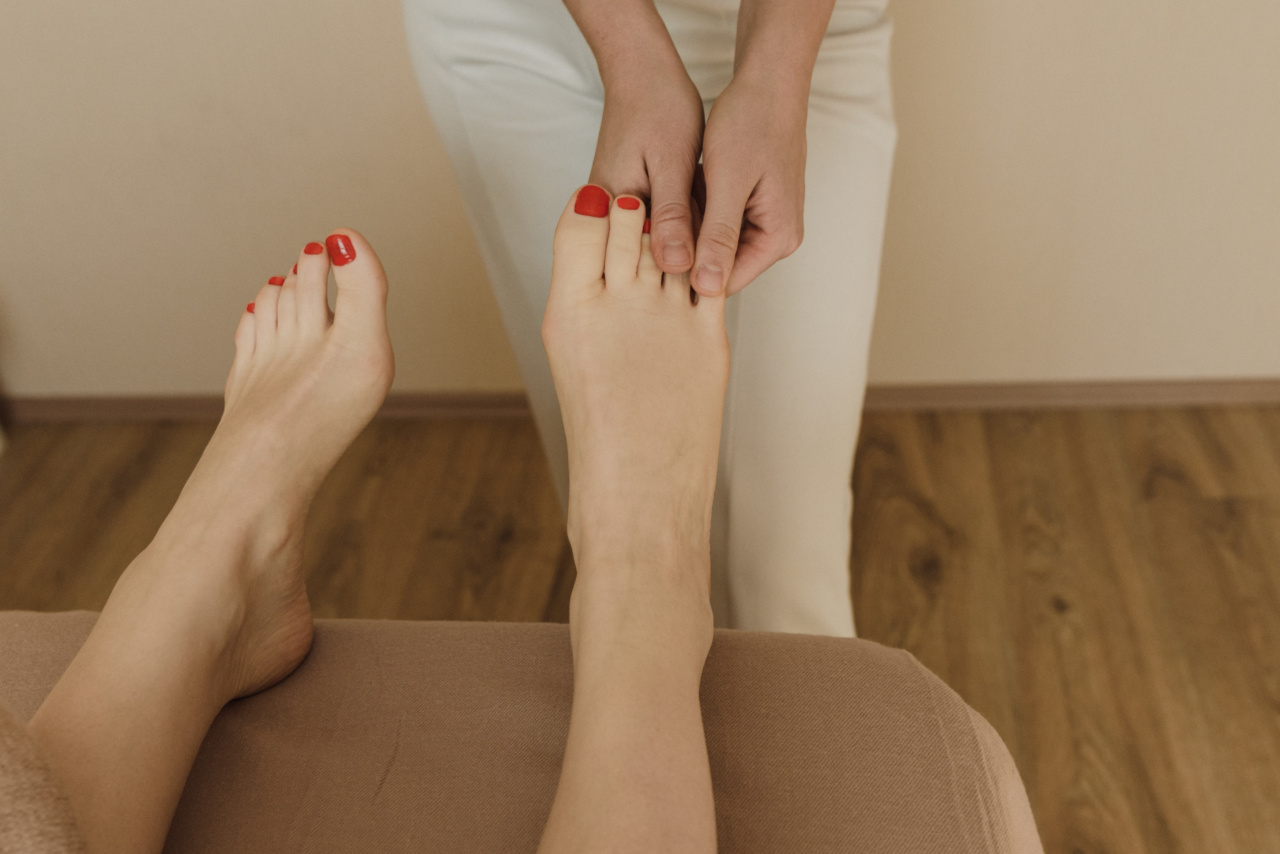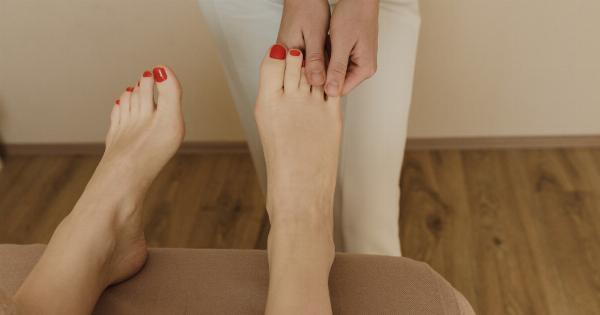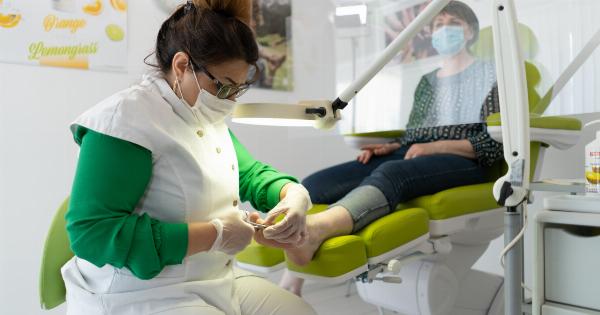Fungus on toe nails, known as onychomycosis, is a common condition that affects many individuals. It occurs when fungi, such as dermatophytes, invade the nails, resulting in various symptoms.
Several factors can contribute to the development of fungus on toe nails, including:.
1. Poor Foot Hygiene
One of the primary causes of fungal infections on toe nails is poor foot hygiene. Not keeping your feet clean and dry can create an ideal environment for fungi to thrive.
2. Trauma to the Nails
Injuries to the toes or nails can weaken the nail’s structure, making it more prone to fungal infections. When the nail is damaged, it provides an entry point for the fungus to invade.
3. Walking Barefoot in Public Places
Public swimming pools, locker rooms, and showers are common breeding grounds for fungi. Walking barefoot in such areas increases the risk of fungal infections on the toe nails since the fungi can be easily transmitted from contaminated surfaces.
4. Wearing Tight or Non-Breathable Footwear
Shoes that are too tight or made of non-breathable materials trap moisture and warmth. This creates an environment that promotes fungal growth.
5. Weakened Immune System
Individuals with compromised immune systems are at a higher risk of developing fungal infections on their toe nails. Conditions such as diabetes, HIV, or certain medications can weaken the immune system, making it easier for fungal infections to occur.
6. Existing Skin Conditions
Having a pre-existing skin condition, such as psoriasis or eczema, increases the likelihood of developing fungal infections on the nails. These skin conditions often weaken the nails and create openings for fungi to enter.
7. Nail Salon Exposures
Visiting nail salons with inadequate sanitation practices can expose you to fungal infections. Manicure or pedicure tools that are not properly sterilized can potentially transmit fungi from one person to another.
8. Genetics
Genetic factors can also play a role in the susceptibility to fungal infections on toe nails. Some individuals may have a higher genetic predisposition, making them more prone to fungal growth.
Symptoms of Fungus on Toe Nails
Recognizing the symptoms of fungus on toe nails is crucial for early detection and treatment. The common symptoms of onychomycosis include:.
1. Thickened Nails
Fungal infections often cause the nails to thicken and become brittle over time. The affected nails may appear distorted and change in shape.
2. Discoloration
The nails may develop a yellow, brown, or whitish discoloration. In some cases, the entire nail may become discolored, while in others, only parts of the nail are affected.
3. Brittle or Crumbly Nails
Infected nails tend to become brittle, crumbly, and prone to breakage. They may also exhibit a powdery texture.
4. Separation of the Nail from the Bed
Fungal infections can cause the nail to separate from the nail bed, leading to pain and discomfort. This condition, known as onycholysis, can also create an opening for bacteria to enter.
5. Foul Odor
In advanced stages of onychomycosis, the infected nails may emit an unpleasant odor. This is due to the accumulation of debris and the presence of fungi.
6. Nail Deformities
Persistent fungal infections can cause the nails to become misshapen or develop irregularities. They may appear ridged, bumpy, or have a wavy texture.
7. Itching and Discomfort
Infected nails are often accompanied by itching, redness, and discomfort. In severe cases, the surrounding skin may become inflamed or develop a rash.
8. Spreading of the Infection
If left untreated, fungus on toe nails can spread to other nails or even to the skin of the feet. This can lead to a more severe fungal infection, often requiring aggressive treatment.
Treatment of Fungus on Toe Nails
Treating fungus on toe nails can be challenging, and it often requires consistent efforts to eliminate the infection completely. The following treatment options are commonly used:.
1. Topical Antifungal Medications
Over-the-counter (OTC) antifungal creams, lotions, and ointments are often the first line of treatment for mild cases of onychomycosis. These products contain ingredients such as clotrimazole or terbinafine, which help kill the fungi.
2. Oral Antifungal Medications
If OTC treatments are ineffective or the infection is severe, your doctor may prescribe oral antifungal medications. These medications, such as terbinafine or itraconazole, work systemically to eradicate the fungi from within.
3. Nail Debridement
In some cases, the infected parts of the nail may need to be removed through debridement. This allows for better penetration of topical medications and reduces the overall fungal load.
4. Laser Therapy
Laser therapy is a relatively new treatment option that focuses intense laser energy on the infected nails. The heat generated by the laser kills the fungi, promoting the growth of healthy nails.
5. Nail Removal
In severe cases of onychomycosis that do not respond to other treatments, nail removal may be necessary. This procedure involves surgical removal of the infected nail to allow for the growth of a new, healthy nail.
6. Maintaining Good Foot Hygiene
Preventing the recurrence of fungal infections on toe nails is crucial. This can be achieved by maintaining good foot hygiene, including regular washing and thorough drying of the feet. It is also important to avoid walking barefoot in public places.
7. Using Antifungal Powders and Sprays
Applying antifungal powders or sprays to your feet and shoes can help prevent the growth of fungi. These products create an inhospitable environment for fungal infections.
8. Avoiding Tight or Non-Breathable Footwear
Choosing well-fitting shoes made of breathable materials can help prevent the occurrence of fungal infections on the toe nails. It is important to allow proper airflow and reduce moisture accumulation.
9. Disinfecting Nail Salon Tools
Before getting any nail services done at a salon, ensure that the tools are properly sterilized. Ask the salon staff about their sanitation practices to reduce the risk of fungal infections.
10. Treating Underlying Conditions
If your fungal infections on the toe nails are recurring or persistent, it is essential to identify and treat any underlying conditions.
Managing conditions like diabetes or psoriasis can improve the overall health of the nails and reduce the risk of fungal infections.





























